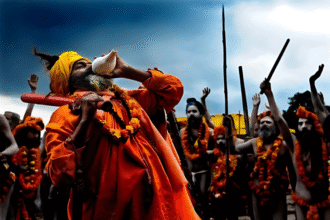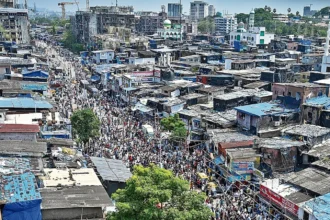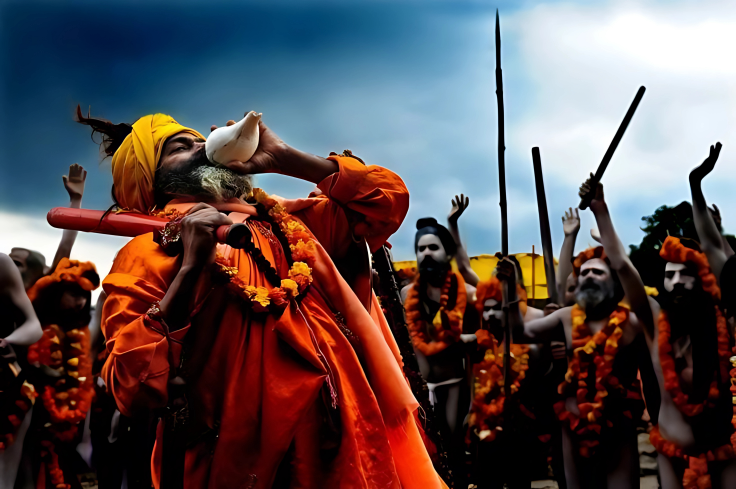The Kumbh Mela is often described as the largest human gathering on Earth — a confluence of faith, history, and meticulous organization. Held at a certain interval period at four sacred sites — Prayagraj, Haridwar, Nashik, and Ujjain — this festival attracts millions of devotees, saints, and tourists from around the world. While today’s Kumbh Mela is an engineering and logistical marvel, its roots trace back thousands of years, deeply embedded in Hindu mythology and Indian cultural heritage.
Mythological Origins of the Kumbh
The story of the Kumbh Mela begins with the ancient Hindu legend of Samudra Manthan — the churning of the ocean of milk by the Devas (gods) and Asuras (demons) to obtain amrit (the nectar of immortality). According to the Kumbh Mela history, when the nectar emerged, a fierce battle ensued.
For 12 divine days (equivalent to 12 human years), the gods and demons fought in the skies. During this battle, drops of the nectar fell at four locations: Prayagraj (Triveni Sangam), Haridwar (Ganga), Nashik (Godavari), and Ujjain (Shipra). These became the sacred sites of the Kumbh Mela.
Astrological & Calendar Significance
The Kumbh calendar is not a simple date sheet — it is determined by precise astrological alignments. The festival at each location is decided based on the position of Jupiter, the Sun, and the Moon in specific zodiac signs. This celestial calculation is why each site hosts the event in rotation over a 12-year cycle, with the Maha Kumbh occurring once every 144 years in Prayagraj.
Key bathing days such as Makar Sankranti, Mauni Amavasya, and Basant Panchami are considered especially auspicious. These Shahi Snan days draw millions to take a dip at the Triveni Sangam or other sacred confluences, believed to wash away sins and pave the way for moksha (liberation).
Evolution of the Kumbh Mela Through History
While its mythological origins are ancient, historical records of the Kumbh Mela date back to at least the 7th century CE. Chinese traveler Xuanzang wrote about a massive religious gathering on the banks of the Ganga during the reign of King Harshavardhana.
Over centuries, the Kumbh evolved into a grand religious fair, drawing sadhus, akharas, pilgrims, traders, and performers. The British colonial records of the 19th century documented it both as a significant cultural event and a public health challenge due to its scale.
In modern times, the Prayagraj Kumbh Mela, Haridwar Kumbh, Nashik Kumbh, and Ujjain Kumbh have become benchmarks of crowd management, religious tourism, and cultural diplomacy.
Cultural & Spiritual Significance
The Kumbh Mela significance lies in its blend of devotion, knowledge exchange, and cultural unity. Pilgrims come for:
- Spiritual purification through ritual bathing
- Darshan of revered saints and gurus
- Participation in satsangs, bhajans, and cultural performances
- Cultural exchange among diverse regions of India
The presence of Naga sadhus during the Shahi Snan is one of the most iconic sights of the Mela, symbolizing renunciation and spiritual power.
Modern-Day Kumbh: Infrastructure & Global Recognition
Today’s Kumbh Mela is a temporary mega-city with:
- Tent cities for accommodation
- Medical facilities and hospitals
- Integrated Command and Control Centres for safety
- Eco-friendly waste management and sanitation systems
In 2017, UNESCO recognized the Kumbh Mela as an Intangible Cultural Heritage of Humanity, cementing its global cultural status.
Why the Kumbh Mela Matters Today
The Kumbh is not just a religious gathering; it is a cultural anchor and spiritual reset for millions. It is also a platform for religious tourism, generating significant economic activity for host cities.
With its Kumbh Mela history, astrological importance, and ever-growing scale, the festival remains a living testament to India’s ability to blend ancient tradition with modern management.
FAQs
Q1: When was the first recorded Kumbh Mela?
The earliest historical reference is from the 7th century CE during King Harshavardhana’s reign, documented by Chinese traveler Xuanzang.
Q2: What are the four locations of the Kumbh Mela?
Prayagraj, Haridwar, Nashik, and Ujjain — each linked to where drops of nectar fell during the Samudra Manthan.
Q3: What is the Maha Kumbh?
Held once every 144 years at Prayagraj, it is the largest and most auspicious form of the Kumbh.
Q4: How are Kumbh Mela dates decided?
By planetary positions — mainly Jupiter, the Sun, and the Moon — in specific zodiac alignments.
Q5: What happens during the Shahi Snan?
A ceremonial royal bath led by akharas and saints, considered the most sacred ritual of the festival.





